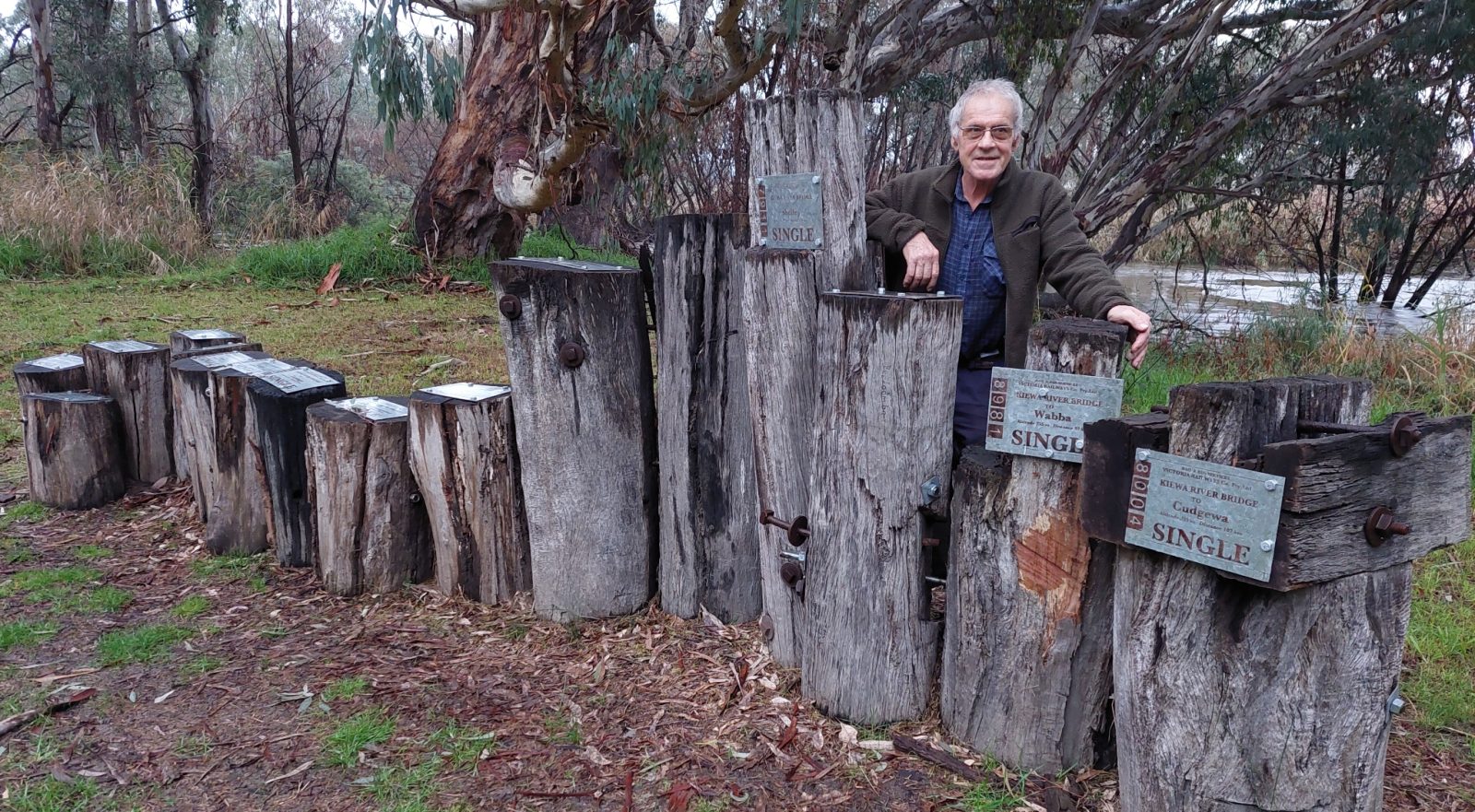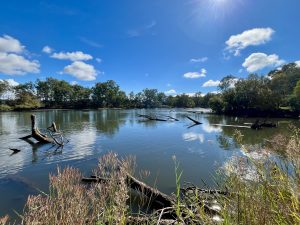Been out on the High Country Rail Trail recently? This sculpture on the Kiewa river by local artist Max Laubli reveals fascinating details of the language of railway engineering used throughout the 20th century on Victoria’s rail lines.
The artwork uses timber salvaged from an old Kiewa River trestle bridge, an appropriate repurposing of old river red gum not yet past service.
The different heights of the red gum posts represent the station heights along the High Country Rail Trail.
The metal station name signs represent rail tickets, including the altitude of the destination and distance between stations.
You can see some of the original construction markings on the timber posts, which tell a remarkably detailed story of the original bridge.
Trestle bridge piles and timber beams were ‘marked’ when they were placed or replaced. Dates, installation method and depths were cut into the timber.
Beams and crossheads were marked with the month and year.
Piles were inscribed with an installation description – ‘B’ for Butt spliced, ‘D’ for Driven or ‘P’ for Planted, the month and year and a foundation depth in Roman Numerals.







